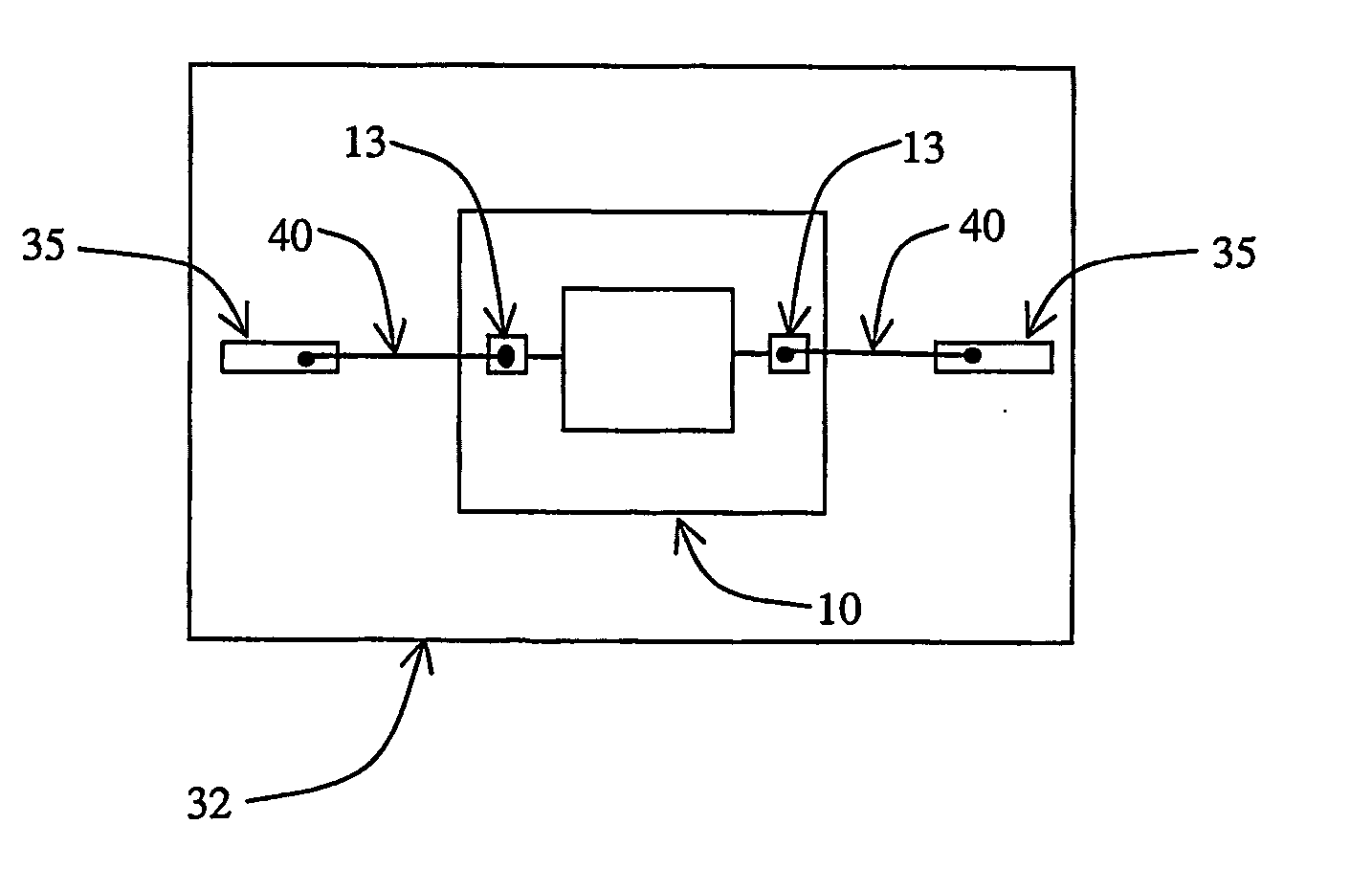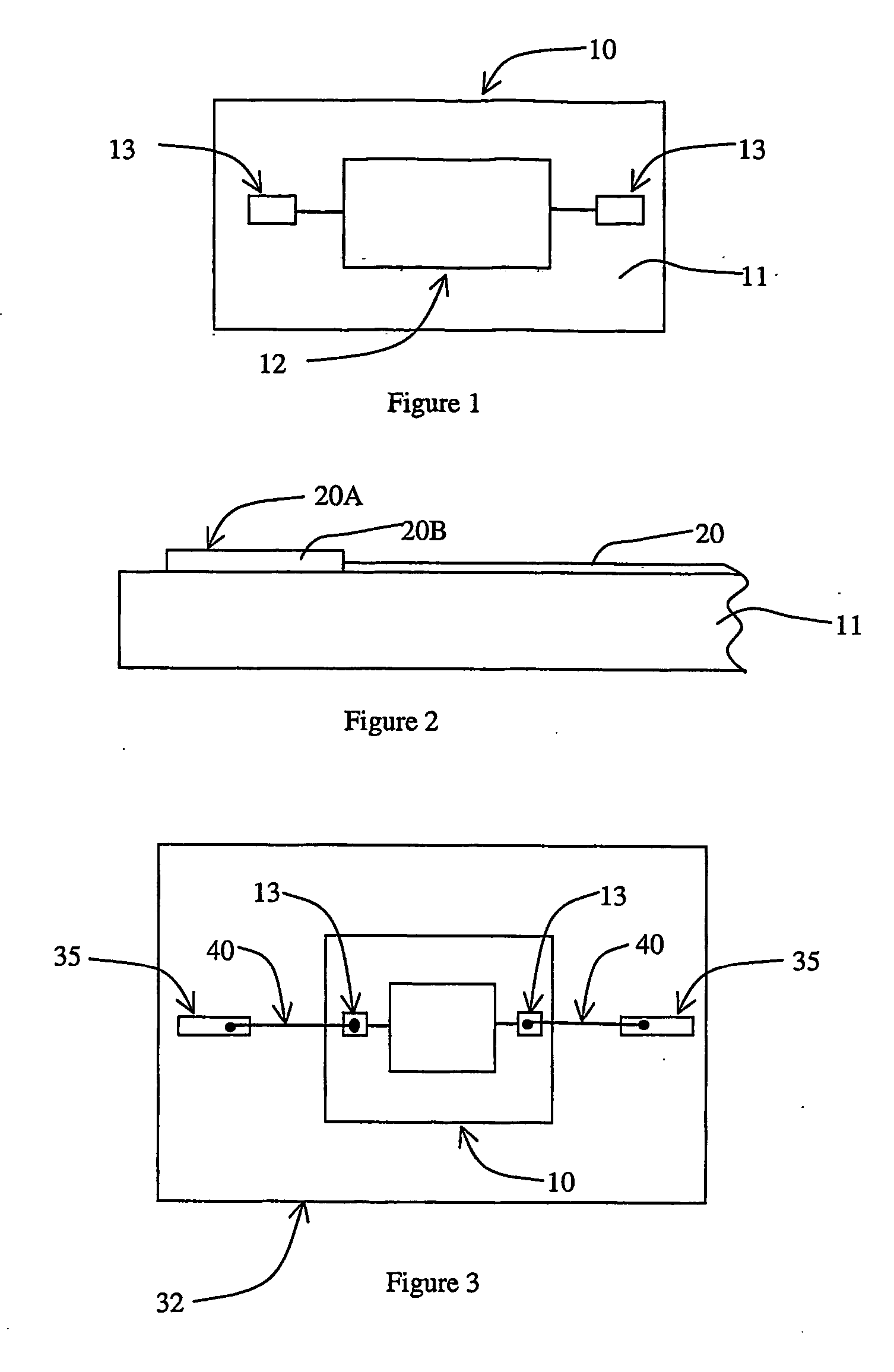Interconnect apparatus and methods
a technology of interconnection and components, applied in the direction of manufacturing tools, contact member manufacturing, welding apparatus, etc., can solve the problem of recognizing that cu(n) is also relatively unstabl
- Summary
- Abstract
- Description
- Claims
- Application Information
AI Technical Summary
Benefits of technology
Problems solved by technology
Method used
Image
Examples
example 1
[0036] A silicon die comprising a substrate and a conductive copper layer, of the general type illustrated in FIG. 2, is provided. The conductive copper layer is 10,000 Angstroms and forms the base for a bond pad on the die. A protective surface is formed on the bond pad by first pre-treating the bonding surface with a gaseous composition consisting of about 95 mole % nitrogen (N2) and 5 mole % of hydrogen (H2). The surface is exposed to this first pre-treating gas at a temperature of about 400° C. for about nine (9) hours to produce a bonding surface that is substantially free of copper oxide. The bonding surface is then exposed to a second pre-treating step by exposure to a gaseous composition consisting essentially of oxygen (O2) at a temperature of about 200° C. for about five (5) minutes to produce a copper oxide layer with a well-controlled thickness. The oxide layer is then treated with anhydrous ammonia for 5 hours at about 275° C. to produce a substantially non-conductive s...
example 2
[0037] Copper nitride is deposited onto a quarter of an 8-inch silicon wafer with a uniform 1 micron thick copper coating by radio-frequency sputtering of a copper target in an atmosphere of approximately 4 mtorr nitrogen. A 200 Angstrom deposit is produced at a sputtering rate of approximately 33 Angstrom per minute. During the process, the wafer is heated to 100° C. FIG. 5 shows a Auger depth profile of the elemental composition. The Auger data clearly indicates a copper nitride coating with a thickness of about 200 Angstrom. The silicon and oxygen are most likely contaminants present on the wafer before the experiment.
example 3
[0038] Copper nitride is deposited by a vacuum deposition technique as follows. Helium gas at a pressure of approximately 1 atmosphere pressure is passed through a nozzle situated approximately 10 cm above a copper-coated silicon wafer in a vacuum chamber. The substrate is heated to approximately 120° C. An electric discharge between an anode and a copper hollow cathode sputtering target inside the nozzle introduce copper atoms and ions into the helium. Nitrogen gas is introduced below the nozzle to produce a background pressure of approximately 30 mtorr of nitrogen. The interaction of the copper atoms or ions with the nitrogen causes the deposition of copper nitride on the surface. FIG. 6 shows an Auger elemental depth profile for the sample produced in this experiment. The depth profile demonstrates the formation of a surface layer of copper nitride with a thickness of about 50 Angstroms on the copper-coated wafer. The oxygen seen at a greater depth is the copper oxide that existe...
PUM
| Property | Measurement | Unit |
|---|---|---|
| temperatures | aaaaa | aaaaa |
| temperature | aaaaa | aaaaa |
| temperature | aaaaa | aaaaa |
Abstract
Description
Claims
Application Information
 Login to View More
Login to View More - R&D
- Intellectual Property
- Life Sciences
- Materials
- Tech Scout
- Unparalleled Data Quality
- Higher Quality Content
- 60% Fewer Hallucinations
Browse by: Latest US Patents, China's latest patents, Technical Efficacy Thesaurus, Application Domain, Technology Topic, Popular Technical Reports.
© 2025 PatSnap. All rights reserved.Legal|Privacy policy|Modern Slavery Act Transparency Statement|Sitemap|About US| Contact US: help@patsnap.com



